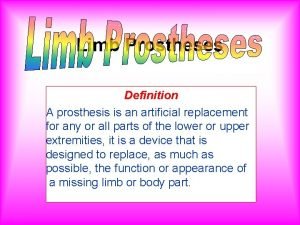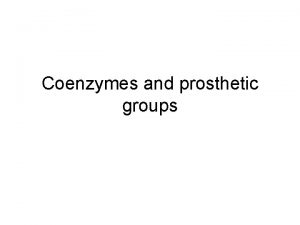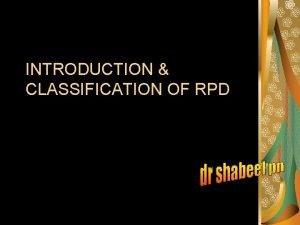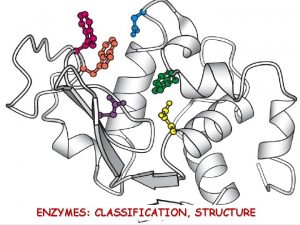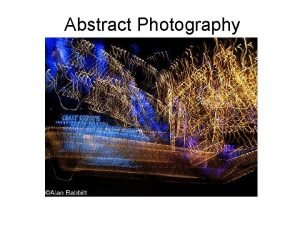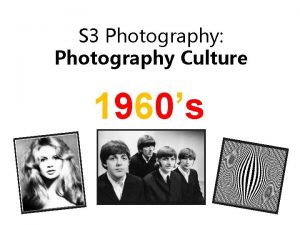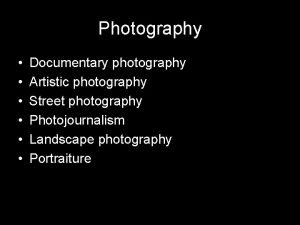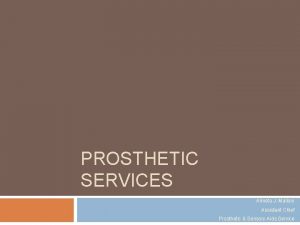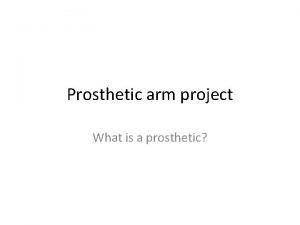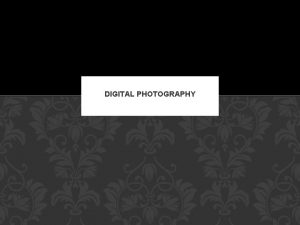Photography in Prosthetic Culture The Art of Photography








- Slides: 8

Photography in Prosthetic Culture The Art of Photography 2014

Identity and Prosthetic Culture The human being is a cultured animal. Culture works like a prosthesis. Therefore, human beings are prosthetic creatures by definition. The self includes, incorporates a technological other: Intenalised, culturally produced, idealised images Technically mediated styles, fashion, manners, values Technological others: books, notes, photos, Pcs, smart phones etc. Competing notions if identity: possessive

Possessive individualism „A free, self-determining and self-responsible identity is constituted as a property” (1) Constituted through the recognition of one's possesion of a unique body Individualism is a doctrine of human nature, and is based on: freedom, action, rationality and self -motivation Individualism is a modern notion, a reaction against the traditionalism of pre-modern and pre-capitalist societies

Photo and possessive individualism „Through the operations of this shadow archive, then, photography tied selfidentity to the cultural and legal construction of an ideal self modelled in property rights by presuming a particular conception of the individual and the individual’s relation to humanity, within which the notion of the possessive individual had a special visibility. The very aesthetic conventions of portraiture enforced the individual’s claims to assert his or her ownership of the self. ” „On the one hand, then, the portrait allowed for scrutiny of the person, the search for and depiction of character. It gave the belief in individualism full play, inviting the view that the individual is first and foremost a personality whose characteristics can be read from facial expression and gesture. On the other hand, however, the portrait might also communicate a type, whether that type be a sub-section of humanity or the whole of humanity itself, and thus provided a technique of individuation. ”

Prosthetic experimental subjectivity „The photograph, more than merely representing, has taughts us a way of seeing, and… this way of seeing has transformed contemporary self-understandings. ” (2) Not „I think, therefore I am”, but „I can, therefore I am” A synthesis of body, collectivity and memory (Locke) may turn into prosthesis Transplantations make ID Qs difficult „How old are you? ” „Is this your body? ” Baudrillard: „the enabling power of technology”

Prosthetic experimental subjectivity „What was naturally or socially determined or constructed in the individual self-identity of plural culture is thus no longer a given in prosthetic culture, but is rather a matter of potential or technologically assisted choice or selection, a question of indifferentiation and outcontextualisation. ” „The creation of implants or prosthetic organs, for example, requires an elaborate social organization of production, distribution, marketing, maintenance and repair of the artefacts. The individual’s body is now part-industrial. His implants link him permanently to the world of industry and science. He is also the ultimate consumer, incorporating the

„. . . the genre of portraiture has played a significant role in the development of the likenesses through which the self-understanding of the possessive individual has been secured. In the aesthetic conventions of this genre, the viewer is invited to transform him- or herself in anticipation of what he or she might look like as an image. This is part of a more general functioning of photography in which ‘living beings [are turned] into things, things into living beings’ (Sontag, 1977: 98). ” „as Baudrillard (1995) claims, that since we now live in a culture in which we each have a video recorder in our head, we are constantly in the position of having to transform ourselves in the anticipation of what we might look like as an image. In other words, the invitation is more often than not a prescription; in Adorno’s classic phrase, the invitation to ‘become what you are’ is one we cannot easily refuse. ” „repetitive dis-internalisation of subjectivity”

„an individual for whom the possession of a resource-ful self is something to be worked at in the very serious role-play of what might be called experimental individualism. It is an individual who in looking in the mirror of the technological order no longer sees a reflection, but looks through the mirror to what he or she could be. ” New concepts: The eperimental self, mimicry („the powerful compulsion … to become and behave like something else” – W. Benjamin)

